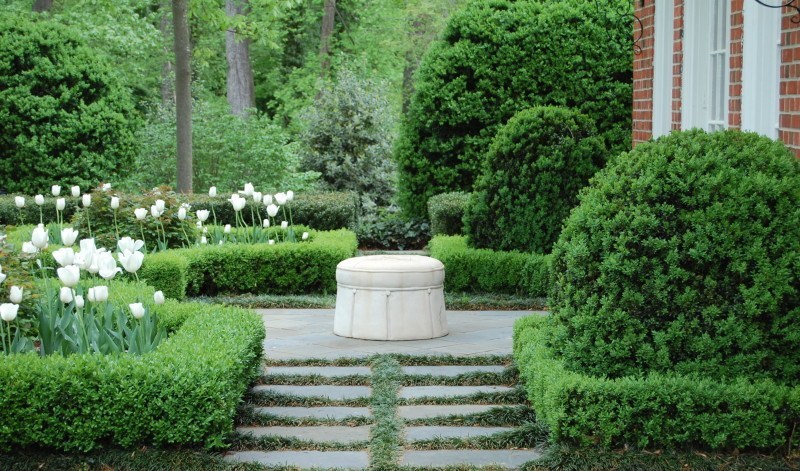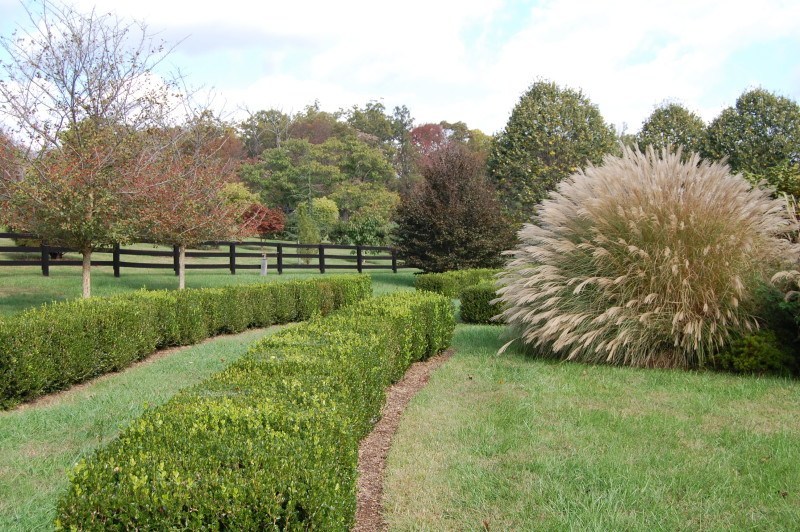BOXWOOD BLIGHT ALERT
When I last reported about Boxwood Blight (Cylindrocladium buxicola) in my blog, the only known infected plants in Virginia had been quarantined in a nursery on the North Carolina border. The nursery industry and the Virginia Department of Agriculture acted immediately to establish best practices to limit the spread of the blight, and the industry, the government and academia have been working to find ways to combat the disease. Unfortunately, these efforts have not succeeding in isolating the disease. Boxwood Blight has now been reported in residential gardens from North Carolina to Rhode Island, and has been confirmed here in Richmond. Studies have also found that Sarcococca (Sweetbox) and Pachysandra terminalis may also be hosts for the Blight.
I’ve found Saunders Brothers Boxwood Nursery to be the most thorough and current resource for both historical and developing information on the Blight. If this is a subject that affects you, please check the Saunders Brothers website and your local extension agency for the latest updates. The American Boxwood Society will hold its annual symposium May 14-16, 2014, and will devote significant time to Boxwood Blight.
THE SYMPTOMS:
- Dark brown spots on leaves, may eventually cover entire leaf
- Black streams on stems that appear to move from bottom of plant to top
- Severe defoliation and dieback
- North Carolina State University has some good images of plants infected with the Blight.
TREATMENT AND PREVENTION
- It is now accepted, based on research in Europe where gardeners have been dealing with the Blight since the mid 1990’s, that Boxwood Blight is not something that will be eradicated or even prevented, but is instead something that we need to learn to live with and manage (as we do with pysillid and leaf miner).
- The United States Department of Agriculture recommends
removing infected twigs, fallen leaves and the topsoil under affected plants because the fungus can persist on fallen leaves and debris.
-
Saunders Brothers recommends ensuring good air flow in and around plants, ample sunshine, and no overhead irrigation. USDA recommends regular fall pruning to thin the branches of English Boxwood (Buxus sempervirens ‘Suffruticosa’) or other tightly growing Boxwood, to provide air circulation, thus making it harder for the fungus to incubate and spread. This is especially important for tightly growing hedges.
- Saunders Brothers also reports that some “fungicides are very effective in controlling the disease, particularly when applied just before a prime infection period, which would be average temperatures in the 60’s to 70’s and complete wetting of the plant for an extended period”. Please contact your trusted landscaper, extension agent or nursery for more specific guidance on this front.
LESS SUSCEPTIBLE CULTIVARS
English Boxwood seems to be the most susceptible Boxwood to the Blight. Saunders Brothers and North Carolina State University are aggressively researching which cultivars of Buxus are most resistant to the Blight. This from Saunders Brothers:
“We continue to work with the researchers at NC State as they do varietal susceptibility trials. This spring we took a second load of plants to begin testing. The good news is that early tests show several of the varieties we have grown for years appear to have very good resistance to Boxwood Blight. ‘Green Beauty’, Insularis ‘Nana’, ‘Golden Dream’, ‘Winter Gem’, ‘Dee Runk’, ‘Fastigiata’, ‘Green Gem’, and ‘John Baldwin’ all show considerable resistance to the disease. ‘Green Mountain’ and ‘Jim Stauffer’ both show some resistance.”
If you think your Boxwood are infected with Boxwood Blight, consult a trusted landscape expert and/or bring a sample (double-bagged) to your local extension office for diagnosis.


